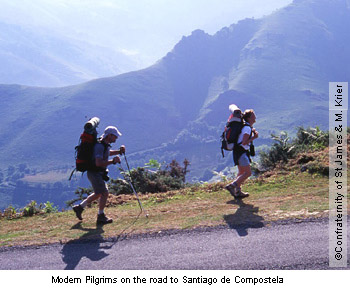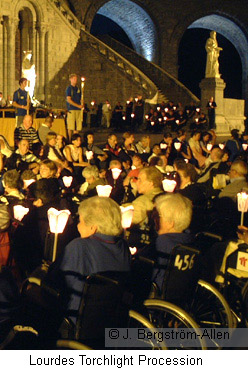
Social Anthropology

Introduction

Social Anthropology involves the study of human cultures in all their diversity across the globe, and has a long history of studying the religious practices of 'tribal' as well as world religions. One might therefore expect to discover a long line of anthropologists who have studied pilgrimage. However, despite its prominence and popularity across cultures and religions, pilgrimage has not always received the attention from anthropologists that it has deserved. Thankfully such relative neglect is now being remedied by a growing body of work, as researchers understand the continued - often even increasing - importance of religious travel in a globalising world.
A major hurdle for anthropologists has been the very mobility that pilgrimage usually entails. For researchers who have been used to staying in one place in order to study cultures at ground level, the fact that pilgrimages have often involved movements of large numbers of people across territories and social divisions has been seen as a problem. A very early ethnographic study by Robert Hertz of the Italian Alpine cult of 'St Besse', first published in 1913, did not prove to be the catalyst for a host of other studies of pilgrimage cults.
The work of Victor and Edith Turner

Much later, another work by two anthropologists who had converted to Catholicism would prove to have a much greater impact. Victor and Edith Turner's Image and Pilgrimage in Christian Culture, published in 1978, drew on classic anthropological themes in an innovative way. They were interested in how 'Christian culture' might be shown to transcend historical, geographical and social boundaries, and pilgrimage proved an ideal means of tracing such transcendence. But what was most significant was the Turners' use of the older notion of the rite of passage (an event or process which both marked and actually created transitions between places, ages, social states and roles: from child to adult, unmarried to married, living person to dead ancestor, and so on). For them, pilgrimage had certain similarities with such rites in the way it encouraged people to move (literally and metaphorically) from their normal, everyday lives and enter, however temporarily, different social and spiritual worlds. They coined a term for the experience of 'losing' one's old identity and freely and spontaneously encountering others on pilgrimage: communitas. After such an experience, as in a rite of passage, there was a chance that the person would return renewed, even transformed.
Another important aspect of the Turners' work was how 'image' related to 'pilgrimage' and, for instance, they produced a rich analysis of the historical and iconographical associations of the Virgin of Guadalupe and Our Lady of the Remedies in Mexico.
Much subsequent work on pilgrimage, in Christian and non-Christian contexts, has drawn upon the Turnerian paradigm. Increasingly, however, it has proved insufficient to describe the often troubled, rivalrous relations among visitors to sacred sites. The anthropologists John Eade and Michael Sallnow actually used the term 'contesting the sacred' to encapsulate the competition not only between religious authorities and pilgrims but also among pilgrims themselves at some of the great shrines of the Christian landscape. These debates, alongside long-running discussions of how pilgrimage relates to complex ideas of the sacred as well as to more secular practices of travel continue in the anthropological literature. In addition, as the study of pilgrimage has increased, ethnographers have examined such themes as pilgrimage's relations to gender, movement, tourism, and many other aspects of contemporary life.
Simon Coleman
Further Reading
- Badone, E., and S. Roseman, eds. 2004. Intersecting Journeys: The Anthropology of Pilgrimage and Tourism. Chicago: University of Illinois Press.
- Bauman, Z. 1996. 'From Pilgrim to Tourist - or a Short History of Identity'. In Questions of Cultural Identity, ed. S. Hall and P. du Gay. London: Sage.
- Bauman, Z. 2000. Liquid Modernity, Cambridge: Polity Press.
- Bhardwaj, S. M. 1973. Hindu Places of Pilgrimage in India: a Study in Cultural Geography. Berkeley: University of California Press.
- Clifford, J. 1997. Routes: Travel and Translation in the Late Twentieth Century. Cambridge, MA: Harvard University Press.
- Coleman, Simon, and John Elsner. 1995. Pilgrimage Past and Present: Sacred Travel and Sacred Space in the World Religions. London: British Museum Press and Cambridge MA: Harvard University Press.
- Coleman, Simon, and John Elsner, eds. 2003. Pilgrim Voices: Narrative and Authorship in Christian Pilgrimage. Oxford and New York: Berghahn Books.
- Coleman, Simon, and John Eade, eds. 2004. Reframing Pilgrimage: Cultures in Motion. London: Routledge.
- Dubisch, Jill. 1995. In a Different Place: Pilgrimage, Gender, and Politics at a Greek Island Shrine. Princeton: Princeton University Press.
- Eade, John, and Michael J. Sallnow, eds. 1991. Contesting the Sacred: The Anthropology of Christian Pilgrimage. London and New York: Routledge.
- Eickelman, D., and J. Piscatori, eds. 1990. Muslim Travellers: Pilgrimage, Migration, and the Religious Imagination. Berkeley and Los Angeles: University of California Press.
- Frey, Nancy Louise. 1998. Pilgrim Stories: On and Off the Road to Santiago. Berkeley: University of California Press.
- Gennep, Arnold van. 1909. The Rites of Passage, reprint 1960. London: Routledge and Kegan Paul.
- Gold, S. 1988. Fruitful Journeys: the Ways of Rajasthani Pilgrims. Berkeley: University of California Press.
- Morinis, Alan. 1984. Pilgrimage in the Hindu Tradition: A Case Study of West Bengal. Delhi: Oxford University Press.
- Morinis, Alan, ed. 1992. Sacred Journeys: the Anthropology of Pilgrimage. Westport and London: Greenwood Press.
- Reader, Ian, and Tony Walter, eds. 1993. Pilgrimage in Popular Culture, Basingstoke: Macmillan.
- Sallnow, M. 1987. Pilgrims of the Andes: Regional Cults in Cusco. Washington: Smithsonian Institution Press.
- Swatos, W. Jr., and L. Tomasi, eds. From Medieval Pilgrimage to Religious Tourism: the Social and Cultural Economics of Piety. Westport, Connecticut: Praeger.
- Turner, Victor, and Edith Turner. 1978. Image and Pilgrimage in Christian Culture. New York: Columbia University Press.
- Wolf, E. 1958. "The Virgin of Guadalupe: a Mexican National Symbol", Journal of American Folklore 71(1): 34-39.
- Yamba, C. B. 1995. Permanent Pilgrims: the Idea of Pilgrimage in the Lives of West African Muslims. London: Edinburgh University Press.



